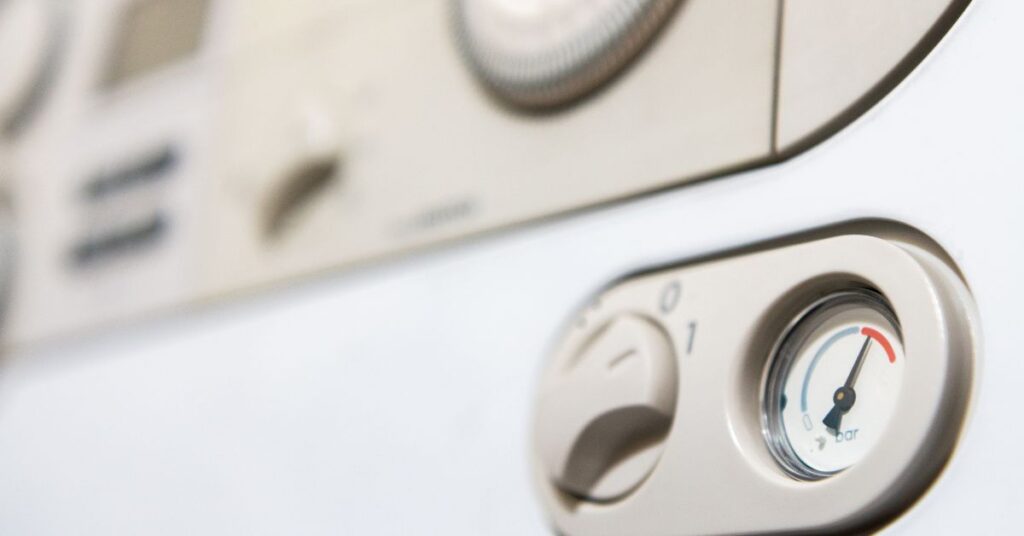Introduction
The proper pressure of your boiler is vital to ensure the effective and secure functioning of the heating unit. If not appropriately controlled, pressure in the boiler can cause various issues, ranging from heating inefficiencies to possible damage and risks. In this article, we will look at the necessity of managing the boiler’s pressure, how to recognize Lower Boiler Pressure, deal with high pressure, and give you steps to reduce the pressure effectively.
Importance of Maintaining Correct Boiler Pressure
The correct pressure for your boiler will ensure that your heating system operates effectively and securely. A proper pressure level allows your boiler to effectively heat your home without putting too much stress on the system. A high pressure in the boiler can cause many problems:
- Systems Inefficiency The high pressure can cause a heater to get too hot or work more than is necessary, resulting in lower efficiency and higher bills for energy.
- Injuries to components: High pressure could cause damage to internal parts like pumps, valves, and even the heat exchanger, possibly resulting in expensive repairs.
- Safety Dangers: in extreme instances, high pressure may cause safety risks like leaks or explosions if it is not adequately controlled.
Also Check: – Emergency Boiler Repairs
What Boiler Pressure Is and Why It Matters
Definition of Boiler Pressure
Boiler pressure refers to the pressure inside the boiler’s structure, which is vital for circulating steam or hot water through the radiators in your home. This is measured as a bar, and one bar is approximately the same as the atmospheric pressure at sea level.
Normal Operating Pressure Range
In general, the operating pressure of a domestic boiler is between 1 to 1.5 bars when your boiler is cold and as high as 2 bars when heating. It is essential to read your manual for the exact pressure range for the model you have.
How Pressure is Measured
Pressure is measured by an instrument on one boiler’s side. The gauge gives a read of the pressure level currently which helps you ensure that you are maintaining the correct pressure to ensure optimal performance.
Also Check: – New Boiler Installation
Signs of High Boiler Pressure
It’s essential to recognize the signs of high boiler pressure to address the issue promptly:
- Pressure Gauge Reading: A reading above 2 bars when the system is operating indicates high pressure.
- Strange Noises: Unusual sounds such as banging or clunking may occur if the pressure is too high.
- Leaks: High pressure can cause leaks from the boiler or pipes due to excessive force.
Causes of High Boiler Pressure
Knowing the reasons why pressure in your boiler could increase will help you to address the issue better:
- Systems that are overfilled In addition, adding excessive amounts of liquid to the system may raise the pressure.
- Troublesome Pressure Relief Valve This valve assists in relieving pressure. If it’s not working correctly, it cannot function properly.
- Problems with the Expanding Vessel When the vessel for expansion is defective or requires recharging, the pressure could cause it to increase.
- Leaks or Blockages Leaks or Blockages: The system may be blocked, or leaks may disrupt the pressure balance.
Tools and Materials Needed
Before you begin adjusting the boiler pressure, ensure you have the following tools and materials:
- Pressure Gauge: To measure the current pressure level.
- Boiler Manual: For specific instructions related to your boiler model.
- Essential Tools: Screwdrivers, spanners, and other necessary tools for adjustments.
- Safety Equipment: Gloves and goggles to protect yourself during the process.
Also Check: – Local Biomass Boiler Servicing
How to Lower Boiler Pressure: A Step-by-Step Guide
Step 1: Turn Off the Boiler and Let It Cool Down
For safety reasons, turn off your boiler and allow it to cool before making any adjustments.
Step 2: Locate the Pressure Gauge and Check the Current Reading
Find the pressure gauge on your boiler and note the current pressure level. If it’s above the normal range, you’ll need to lower it.
Step 3: Identify and Check the Pressure Relief Valve and Expansion Vessel
Inspect the pressure relief valve to ensure it’s functioning correctly. Also, check the expansion vessel, which should be properly charged and not causing excess pressure.
Step 4: Bleed Radiators to Release Excess Pressure
Bleeding radiators can help release trapped air and reduce pressure. Use a radiator key to open the valve slightly and let the air escape until water starts flowing.
Step 5: Check for and Fix Any Leaks or Blockages
Inspect the system for any leaks or blockages that may be affecting pressure. Address these issues promptly to maintain a balanced system.
Step 6: Refill the System to the Correct Pressure if Needed
If you’ve lost water during bleeding or repairs, refill the system to the correct pressure level using the filling loop, as specified in your boiler manual.
Step 7: Turn the Boiler Back On and Check the Pressure
Once you’ve made adjustments, turn the boiler back on and monitor the pressure gauge to ensure it remains within the normal range.
When to Call a Professional
If you cannot resolve issues with high pressure despite the steps mentioned above, or if you experience complex problems like faulty components, you should get help from a professional. A qualified technician can identify and fix issues quickly and efficiently.
Preventative Measures
To avoid pressure issues in the future, take these preventative measures:
- Regular maintenance and Service Scheduling annual maintenance ensures your boiler is operating well.
- Periodic Pressure Monitoring: Regularly check your boiler’s pressure to spot problems early.
- Monitoring System for Blockages and Leaks: Look for indications of blockages or leaks and take action immediately.
- The importance of using the Pressure Gauge: Use an instrument to gauge the pressure of your system. This will ensure that your system is within the recommended pressure range.
Conclusion
Maintaining the correct boiler pressure is essential for the efficient and safe operation of your heating system. By understanding how to monitor and adjust boiler pressure, you can prevent issues and ensure optimal performance. Remember to consult a professional if needed and follow regular maintenance practices to keep your boiler in top shape.
FAQs
How often should I check my boiler pressure?
It’s a good practice to check your boiler pressure at least once a month, or more frequently if you notice any issues or changes in performance.
What should boiler pressure be when off?
When the boiler is off and cold, the pressure should typically be between 1 and 1.5 bars. Refer to your boiler manual for the exact specifications for your model.

Sunny Saini is a certified heating engineer with over 15 years of experience in maintaining and repairing boilers. He specializes in diagnosing complex boiler issues and providing reliable solutions to ensure homeowners stay warm and comfortable throughout the year.





![]=](https://localboiler.co.uk/wp-content/uploads/2024/05/Untitled-design-96-300x300.jpg)